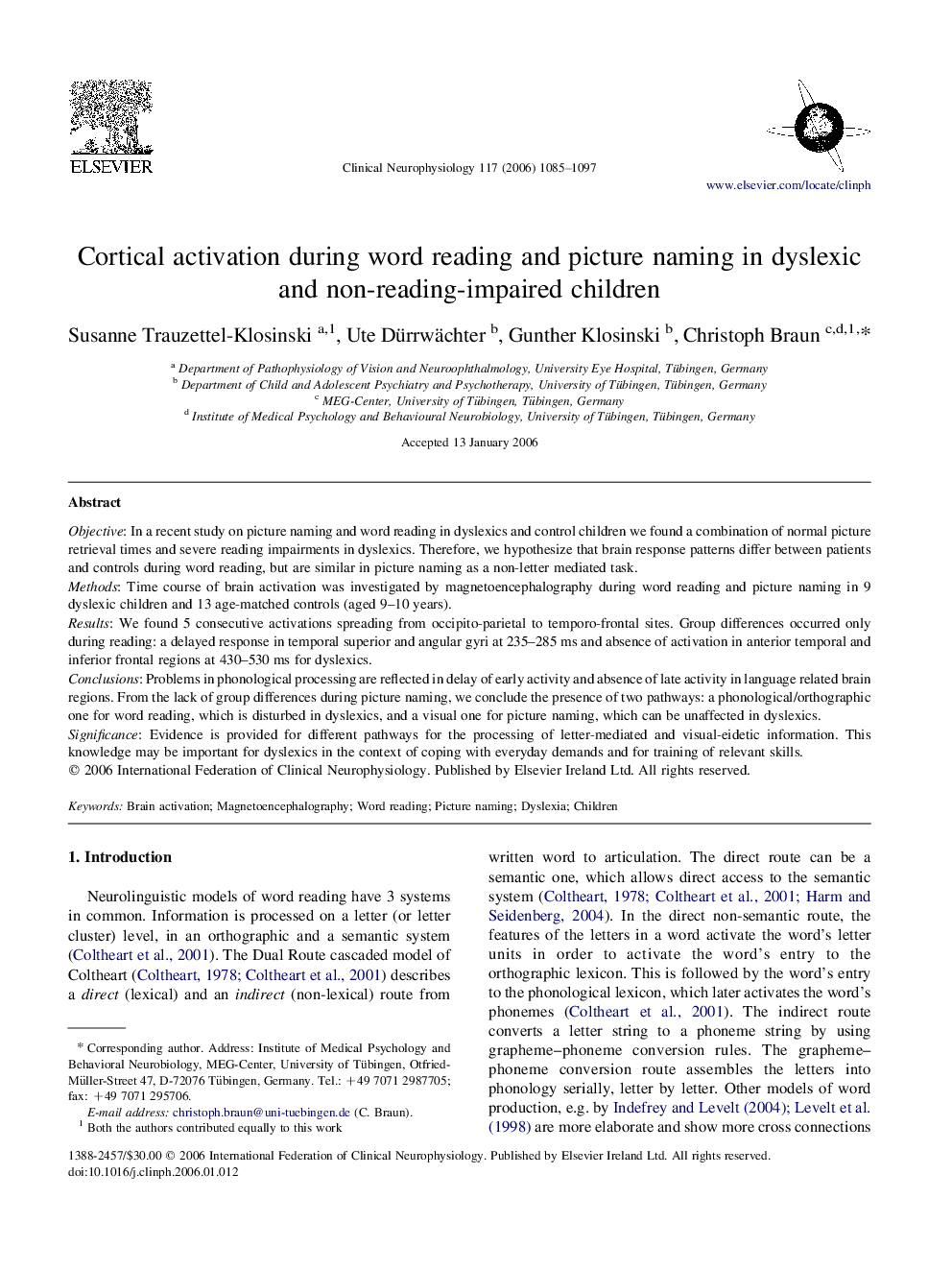| Article ID | Journal | Published Year | Pages | File Type |
|---|---|---|---|---|
| 3048640 | Clinical Neurophysiology | 2006 | 13 Pages |
ObjectiveIn a recent study on picture naming and word reading in dyslexics and control children we found a combination of normal picture retrieval times and severe reading impairments in dyslexics. Therefore, we hypothesize that brain response patterns differ between patients and controls during word reading, but are similar in picture naming as a non-letter mediated task.MethodsTime course of brain activation was investigated by magnetoencephalography during word reading and picture naming in 9 dyslexic children and 13 age-matched controls (aged 9–10 years).ResultsWe found 5 consecutive activations spreading from occipito-parietal to temporo-frontal sites. Group differences occurred only during reading: a delayed response in temporal superior and angular gyri at 235–285 ms and absence of activation in anterior temporal and inferior frontal regions at 430–530 ms for dyslexics.ConclusionsProblems in phonological processing are reflected in delay of early activity and absence of late activity in language related brain regions. From the lack of group differences during picture naming, we conclude the presence of two pathways: a phonological/orthographic one for word reading, which is disturbed in dyslexics, and a visual one for picture naming, which can be unaffected in dyslexics.SignificanceEvidence is provided for different pathways for the processing of letter-mediated and visual-eidetic information. This knowledge may be important for dyslexics in the context of coping with everyday demands and for training of relevant skills.
